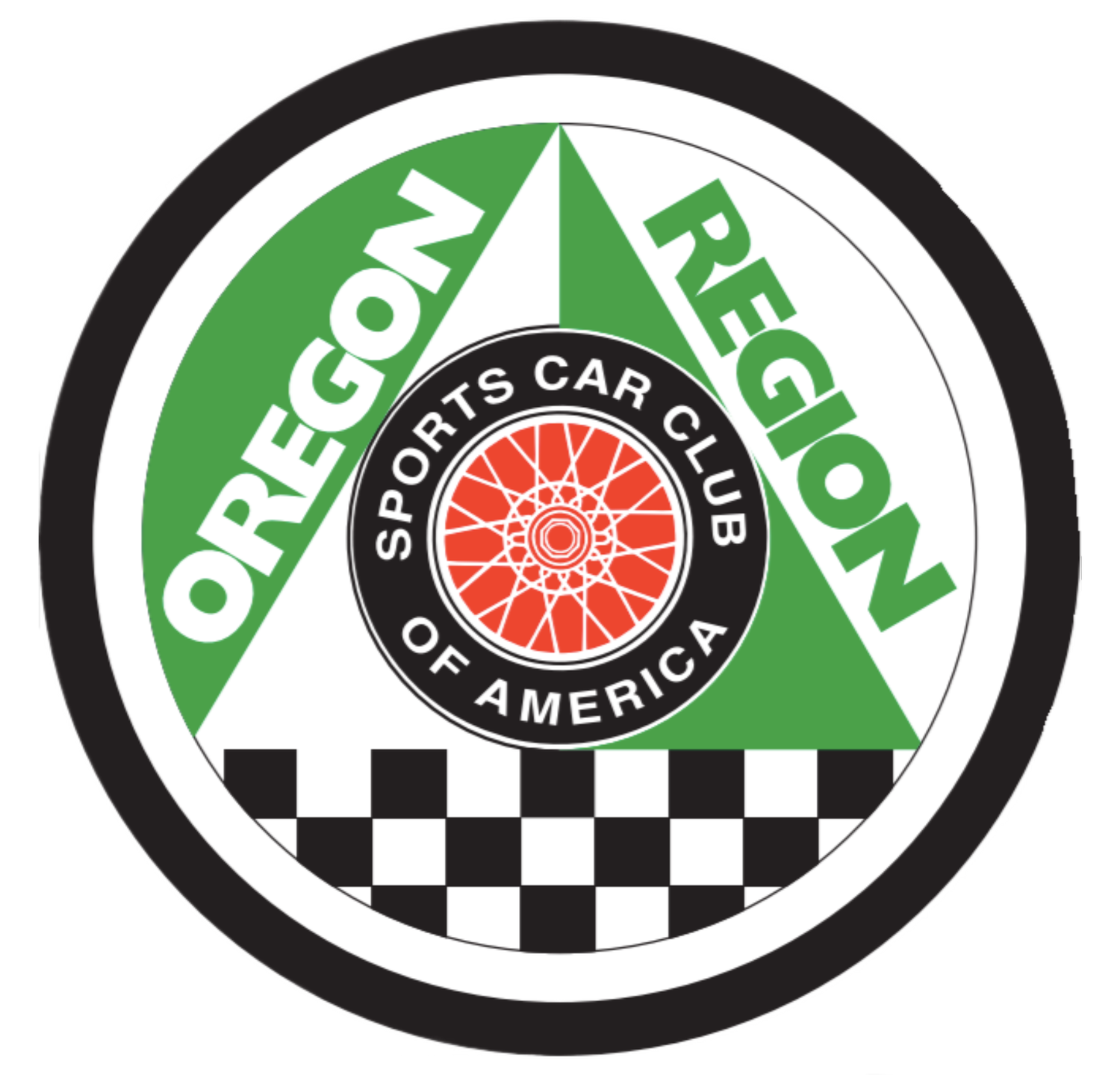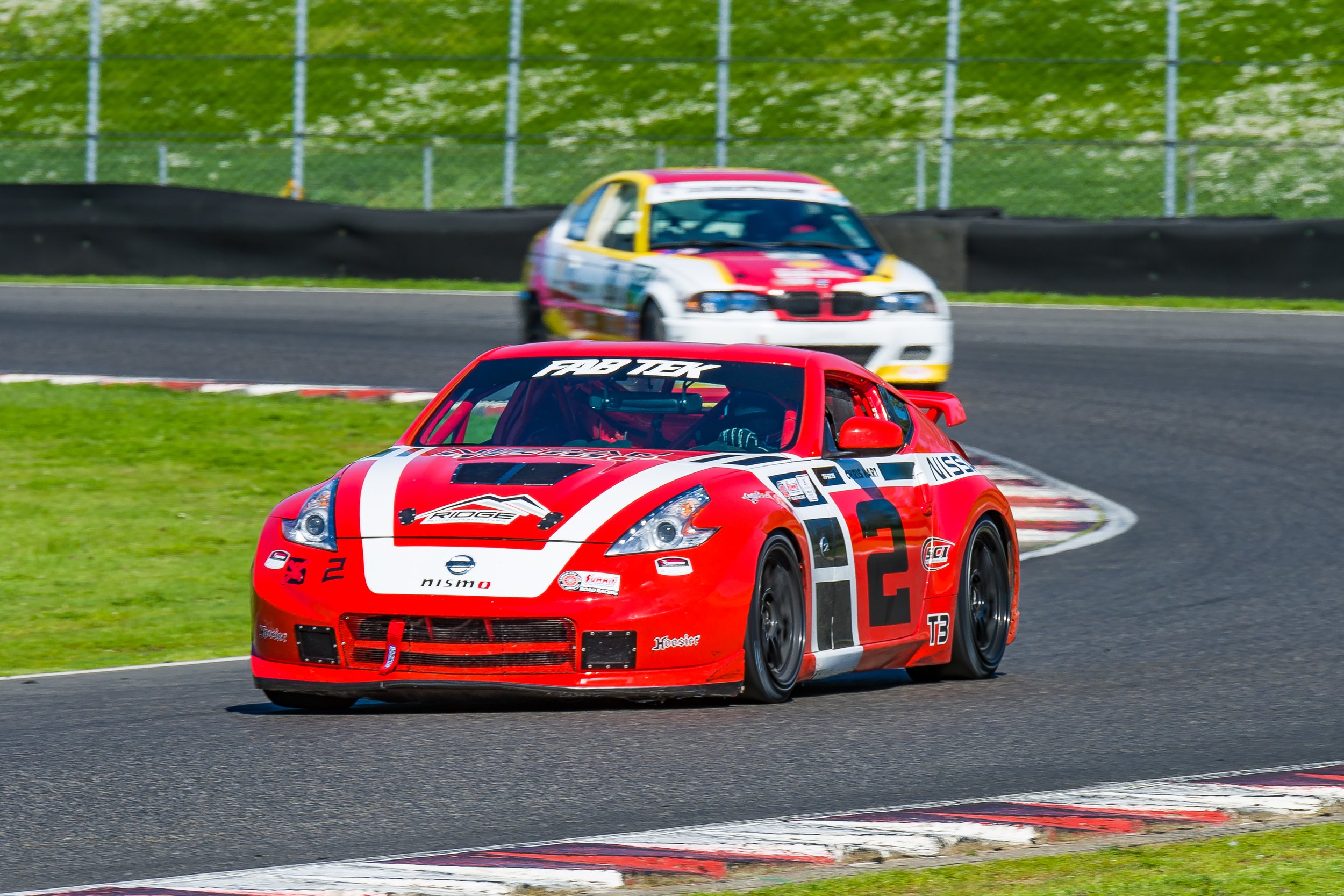
CLASSES
Cars and vehicles are classed in SCCA road racing according to type and modifications. You may find groups of Mazda Miatas racing against each other, or Porsches racing against Ferraris, or formula cars with wings grouped together. Typically our groups are aligned to combine similar speed cars together with a mix of classes making up a race group.
In SCCA there are National (Majors) classes eligible for the Runoffs and also Regional only classes such as SMT (Spec Miata Toyo), ITS, Spec911, Club Ford, Vintage Production, SPO, SPM, and SPU.

TOURING
Touring classes typically refer to lightly modified production cars, or cars built for touring the public roads. In the SCCA Touring 1-4 still very much resemble street-going cars. The only modifications which are allowed are the required safety features and some minor performance modifications to help with class equalization. The Super Touring classes allow additional modifications with aerodynamic devices such as wings and splitters giving builders more creative freedom with their cars development.
Touring 1 features cars such as Vipers, Mustangs, BMW E46 & E92 M3s, and factory GT4 race cars.
Touring 2 features cars such as BMW M2s, 997 & 996 Porsche 911s, BMW M3s, and Vipers.
Touring 3 features cars such as BMW Spec E46s, Nissan 350 & 370Zs, VW Golfs, EcoBoost Mustangs, & BMW Z4s.
Touring 4 features cars such as Mazda 6s, RX8s, NC Miatas, Subaru BRZs, Toyota GT86s, & Mini Coopers.
Super Touring Light (STL) features cars such as NA, NB, NC Miatas, Honda Civics, CRXs, and Integras.
Super Touring Under (STU) features cars such as BMW M3s, Honda Civics, CRXs, S2000s, and Audi S4s.
B-Spec features compact hatch-backs such as Mazda 2s, Chevy Sonics, Honda Fits, and Mini Coopers.
$ - $$$
The cost for these classes can range from affordable to expensive. T4 and STL are great entry level class. T1, T2, and STU can often require more advanced sports cars with heavier modifications allowed.
INTERESTED IN LEARNING MORE ABOUT THESE CLASSES?
EMAIL A LOCAL TOURING RACER.
-
Daspion@gmail.com

PRODUCTION
Production class racecars started life as street cars so they tend to look much like cars you would see on the street. The classes are allowed a range of performance modifications while retaining their original design, structure, and drive layout. E Production (EP), F Production (FP) and H Production (HP) are the current production-based classes at the Majors level.
E-Production features cars such as BMW Z3s & E36s, Honda S2000s, Datsun Zs, and Mazda RX7s & Miatas.
F-Production features cars such as Honda Del Sols & Integras, Mazda Miatas, and Lotus 7s.
H-Production features cars such as MG Midgets, Triumph Spitfires, VW Golfs, and Mini Coopers.
$-$$
The cost for these classes are some of the most affordable in motorsports. Slightly older cars with a cheaper initial cost. The production classes still allow for a reasonable amount of modification but built cars can be found at a great value.
INTERESTED IN LEARNING MORE ABOUT THESE CLASSES?
EMAIL A LOCAL PRODUCTION RACER →
-
flyingphotoaustin@gmail.com

GT
Grand Touring classes are the top of the production-based classes. Though these cars are "based" on cars you might see on the road, they are usually purpose built from the ground up or are factory built race cars.
GT1 features factory GT3 cars, 992 Cup Cars, tube frame Trans-Am Corvettes, Camaros, and Mustangs
GT2 features cars such as Porsche 996-991 Cup cars, Dodge Vipers, BMW M3s, TA2 (Tube frame Chevy & Ford Stock Cars).
GT3 features factory TCR cars, tube frame Mazda RX7s, Nissan 350Zs & 240SXs, & Toyota Celicas
GTL features tube frame Toyota Sentras & Tercels, Honda Civics, Datsuns, Miatas, and MG Midgets.
America Sedan (AS) features old school and modern muscle cars such as Mustangs, Camaros, and Firebirds.
Regional Only Classes:
Super Production Under (SPU): - engine size under 2.3 liters.
Super Production Medium (SPM): - engine size under 5.0 liters.
Super Production Over (SPO): - Any engine size.
View Rules
$$$
Typically these are some of the the fastest and most expensive cars at the track. With factory built machines or heavily modified production based cars the price to race in GT can be expensive.
INTERESTED IN LEARNING MORE ABOUT THESE CLASSES?
EMAIL A LOCAL GT RACER.
-
mcallister@portlandimplantdentistry.com

OPEN WHEEL
There is a wide variety of prototype are all single-seat, open wheel racecars. They are built to detailed specifications for weight, size and engine displacement. There are incredible power to weight ratios in each class.
Prototype 1 & 2 features cars such as Stohrs, Elans, Radicals, Ligiers, Normas, and Wolfs.
Formula Atlantic features cars such as Swift 0.14/0.16, Elan Pro Mazdas, Ligier F3s, and more.
Formula Enterprise 2 (FE2) is a spec class built on a Van Diemen Chassis with a 2.0L Mazda MZR Engine.
Formula Ford features cars such as Van Diemens, Pipers, Mygales, and Swifts with a 1600cc engine.
Formula Vee features a wide variety of purpose built FV chassis with Volkswagen 1200cc engine.
Formula 500 features specially built chassis utilizing 2 stroke and 4 stroke snowmobile and motorcycle engines.
Regional Only Class:
Club Ford features vintage Formula Fords that compete on a vintage spec tire. (View Rules)
$-$$$
There are multiple levels of Formula car racing. Formula Fee and Formula Ford are quite reasonable to get into by sourcing a used chassis. From there on up the price continues to increase based on the speed and complexity of the FE2, FA, and Prototype cars.
INTERESTED IN LEARNING MORE ABOUT THESE CLASSES?
EMAIL A LOCAL FORMULA RACER.
-
tony.opheim@gmail.com

SPEC MIATA
Spec Miata (SM) and Spec Miata Toyo (SMT) offers an opportunity to race a relatively low cost, production based car with limited modifications. One of the best parts of racing in a spec class is having a clear list of compliant modifications. Modifications are clearly laid out in the General Competition Rules (GCR). This class includes Miatas produced from 1990 through 2005. Although the Miata is relatively underpowered, it is an excellent race car that provides great maneuverability in the corners. For these reasons, Spec Miata is a very popular category in SCCA.
In the NW, we have some of the most genuine and talented Spec Miata racers in the whole country. They compete as a regional only class called SMT (Spec Miata Toyo). Same ruleset as SM except they run on Toyo Tires to keep costs down. They have their own series called the NW Spec Miata Tour racing from Washington to Northern California. With field sizes generally above 25 there’s always lots of people to race with and their paddock is more than welcoming. There is always new racers joining their group! It’s the perfect place to start your racing career.
View SMT Oregon Region Rules
$-$$
One of the more affordable ways to go racing in SCCA. Regional based Spec Miatas can be had for as cheap as $10,000. But National level professionally built NB 1.8 liter Chassis SM’s that compete at the SCCA Championship Runoffs can go for as much as $40,000+ for a new or recently built car. But there is an abundance of used cars always hitting the market which make these a fantastic first race car to get your feet wet with. In the NW, the NA 1.6 liter is the popular car of choice for it’s more nimble handling. These cars are generally more affordable and available nationwide.
INTERESTED IN LEARNING MORE ABOUT THESE CLASSES?
EMAIL A LOCAL SPEC MIATA RACER.
-
miataman41@yahoo.com
LEARN ALL ABOUT THE NW SPEC MIATA TOUR

SPEC RACER FORD
The Spec Racer® Ford (SRF) is a one-design, single seat car utilizing a sealed Ford engine. It is SCCA's largest class and continues to provide cost effective racing for over 800 competitors. By limiting the modifications and preparation costs, this class emphasizes driver ability over spending. These cars utilize a SEDIV sequential transmission and a 1.6-liter 4 cylinder engine in a purpose built tube frame racing chassis.
The NW has a great contingent of Spec Racer Ford Drivers! The field sizes are big and the racing is always competitive.
$$
SCCA’s Spec Racer Ford offers a ton of performance for a great value. Although not the cheapest path to racing these cars are reliable, hold their value extremely well, and are all incredibly equal providing the most even playing field in SCCA.
INTERESTED IN LEARNING MORE ABOUT THESE CLASSES?
EMAIL A LOCAL SPEC RACER FORD DRIVER.
-
prodrive@prodrive.net

VINTAGE
ORSCCA Vintage Racing is Presented By:
ORSCCA offers Vintage racing in our Region. From American Muscle Cars, to quick and nimble European and Japanese sports cars, there is a wide range of vintage competitors in our area. Although the emphasis is centered around clean, fun racing, the driving is still spirited and it provides vintage racers a chance to enjoy their historic cars at speed against a wide variety of cars.
Oregon Region recognizes the value of providing an opportunity to race and enjoy vintage race cars, and the desire of its members to do so. Preservation of these cars in a racing environment is viewed as important to the sport and to our club, and retention of experienced vintage drivers fosters continuity of our valued SCCA history and culture.
If you would like to know more about our vintage race car preparation rules and driving regulations, download our supplemental regulations.
ORSCCA Vintage Rules
$-$$$
The cost of vintage race cars varies quite drastically. Unrestored older examples can be found oftentimes for a bargain. While others compete and race with fully restored and period correct historic cars that are valued highly. There is place for all vintage cars to race.
INTERESTED IN LEARNING MORE ABOUT THESE CLASSES?
EMAIL A LOCAL VINTAGE RACER.
-
mlsaki@aol.com
MORE RULES & CLASS / CAR LIST
For a complete list of rules and a list of all eligible cars for each class visit the SCCA’s General Competition Rules (GCR) to get further information on buying, developing, or building a car for a certain class!









